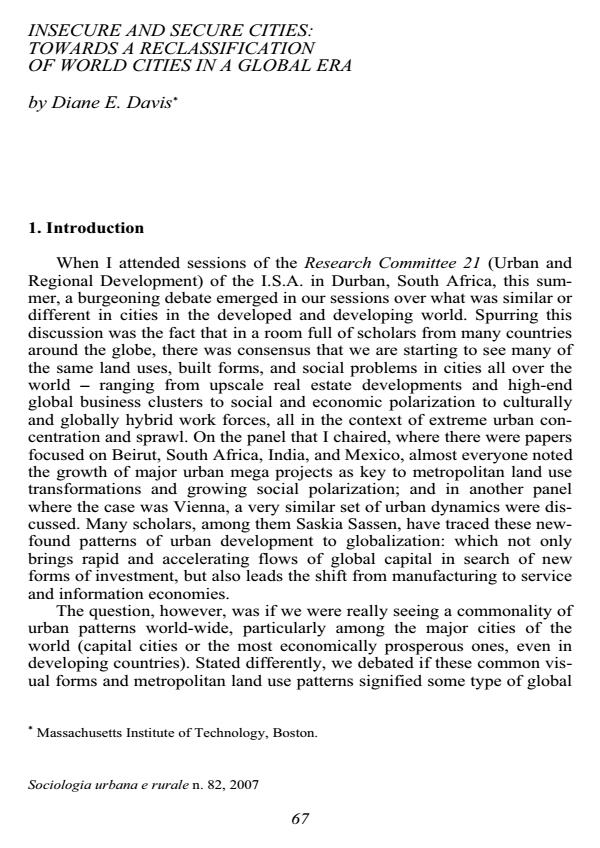Insecure and Secure Cities: towards a reclassification of world cities in a Global Era
Journal title SOCIOLOGIA URBANA E RURALE
Author/s Diane E. Davis
Publishing Year 2007 Issue 2007/82
Language Italian Pages 15 P. 67-81 File size 71 KB
DOI
DOI is like a bar code for intellectual property: to have more infomation
click here
Below, you can see the article first page
If you want to buy this article in PDF format, you can do it, following the instructions to buy download credits

FrancoAngeli is member of Publishers International Linking Association, Inc (PILA), a not-for-profit association which run the CrossRef service enabling links to and from online scholarly content.
This paper focuses on the following question: what, if anything, makes contemporary world cities different from each other? Starting from some sessions of Research Committee 21 (Urban and Regional Development) of I.S.A. in Durban, the author suggests that a key-feature to distinguishing world cities is the acceleration of public insecurity and a deteriorating rule of law, as well the resultant social, spatial, and economic fragmentation these changes engender. So, planners, architects, and sociologists must be prepared to think about how to make or keep cities secure, without resorting only to “privatized” efforts to guarantee security. A possible solution is the creation of public spaces open to all classes and cultures, emphasizing social and economic integration. Moreover, policies for balanced urban employment patterns and alternative land uses are necessary to prevent social and spatial polarization of urban life, and compartmentalization of space and economy into high and low-end activities.
Diane E. Davis, Insecure and Secure Cities: towards a reclassification of world cities in a Global Era in "SOCIOLOGIA URBANA E RURALE" 82/2007, pp 67-81, DOI: